

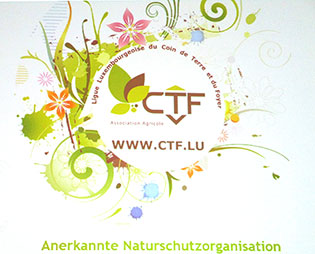 On April 7th, 2019 320 delegates and associative representatives met in Roodt-Syre for their annual congress.
On April 7th, 2019 320 delegates and associative representatives met in Roodt-Syre for their annual congress.
Romain Schneider, minister for agriculture, Carole Dieschbourg, minister for environmental protection as well as many guests and representatives from administration departments and partner organisations, as well as Malou Weirich, secretary general of the International Office du Coin de Terre et des Jardins Familiaux, were present.
After the amendment of the statutes last year, President Martine Mergen informed that they will now deal with the problematic 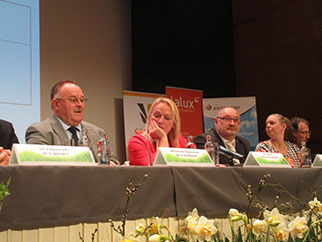 concerning the relationship between the associations and their members on one hand and the relations between the associations and the authorities on the other hand. This is a topic also currently dealt with on international level. She additionally informed on the federation's plans to build a new office building with lecture/education rooms and a surrounding garden area. Hopefully the building can be inaugurated at the occasion of the LUGA2023 (Luxembourgish horticultural exhibition)
concerning the relationship between the associations and their members on one hand and the relations between the associations and the authorities on the other hand. This is a topic also currently dealt with on international level. She additionally informed on the federation's plans to build a new office building with lecture/education rooms and a surrounding garden area. Hopefully the building can be inaugurated at the occasion of the LUGA2023 (Luxembourgish horticultural exhibition)
The congress lecture dealt with the subject: "Biodiversity in our gardens – a Luxembourgish study". This study joins similar studies already made in Austria and Germany.
more pictures: https://www.gaartanheem.lu/index.php/kongress-2019-roodt-syre
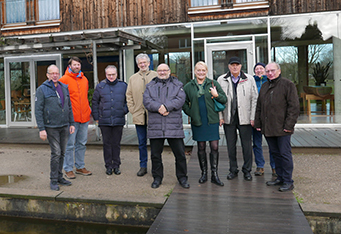 While planning a new Office for the allotment federation in Luxembourg a delegation visited the State school and the office of the allotment federation of Westphalia-Lippe on 13th and 14th January 2019.
While planning a new Office for the allotment federation in Luxembourg a delegation visited the State school and the office of the allotment federation of Westphalia-Lippe on 13th and 14th January 2019.
At the occasion of the State horticultural exhibition in Lünen in 1996 a centre was created in the middle of a large park. This centre unites educational and administrative functions.
The building itself received a prize for its architecture.
It is surrounded by several educative plots, so that the allotment gardeners can also have practical courses.
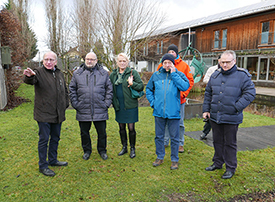 We had the opportunity to get detailed information on the creation of the centre and could exchange with President Wilhelm Spieß and director Werner Heidemann on the problems that occurred during this creation.
We had the opportunity to get detailed information on the creation of the centre and could exchange with President Wilhelm Spieß and director Werner Heidemann on the problems that occurred during this creation.
We were impressed both by this equipment and by the particularly hearty hospitality of our colleagues in Lünen.
Martin Mergen (President), Otmar Hoffmann (Vice-president), Léo Wietor (Vice-president)
Tips from your - Eist Uebst a Geméis" gardener" (Your Fruit and Vegetable gardener)
This type of salad is often served in winter as a delicious appetiser - either alone or together with bits of bacon and egg: it's called lamb's lettuce.
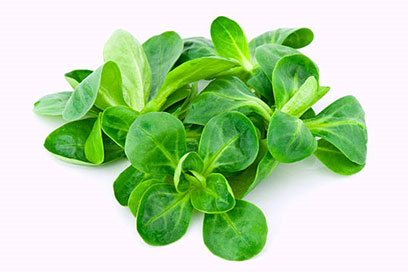 General
General
Lamb's lettuce is popular and widely cultivated in England, Holland, Italy, France and Germany. By now it is also being grown in Luxembourg
This salad is grown and harvested outdoors mainly from October till the end of February. Lamb's lettuce is very cold-tolerant. It also has high vitamin C and iron content. Gourmets speak of the salad's nutty aroma, which is due to its high levels of essential oils.
An uncomplicated vegetable
Lamb's lettuce is an obliging and very straightforward vegetable. As long as you bring it out in a sunny spot, it thrives in almost every type of soil.
Also it requires little in terms of nutrients and is therefore a perfect postcultivation in late autumn to finish the garden year.
Planting
Planting may be done in rows or as single plants over an area. However, we recommend row sowing, as it is easier to care for. The plants should always be kept free of weeds.
When laying out the plants, make sure that there is 10 to 15 cm of space between the rows, so that the lettuce can develop optimally. When sowing, we recommend making a small furrow with a stick in the ground about 1 centimetre deep, then spreading the seeds evenly in the furrow. After sowing, gently press against the soil with a board, as the seeds need to have good soil contact.
Plant care
Lamb's lettuce seeds take about three to four weeks to germinate. During this period, make sure that the young seedlings do not dry out. Due to heavier dews in autumn, the plants normally have enough water available. Despite this, you should carefully check humidity around the plants. If you want to be on the safe side, install an evaporation protection such as a meshed ground cover or perforated foil. But again, checking the plants regularly is important. If the plants get too wet, there is a risk of fungal diseases. Fertilisation is usually not necessary for this crop.
Harvesting
We take care to avoid harvesting when frost is present, because doing so makes lamb's lettuce soggy very quickly. By using ground protection, you can still harvest in light frost.
To stop lamb's lettuce unnecessarily converting nitrate into nitrite, it is advisable to harvest it only in the evening, so that it can make use of the full sun during the day.
Cut the lettuce plants just above the root with a knife, so that the leaves still hold together.
The "Eist Uebst a Geméis" gardeners wish you a good and tasty harvest!
Andreas Löbke